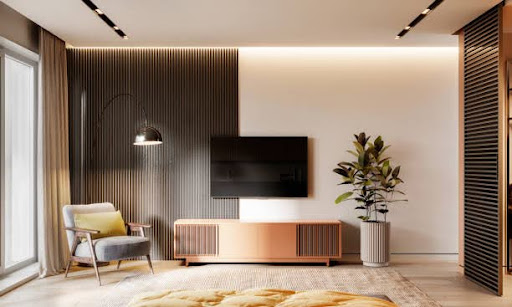What Role Does Scale Play When Choosing Living Room Furniture?
Designing a living room is more than just selecting attractive pieces—it’s about making sure every element fits together in harmony. Scale, the proportion of furniture in relation to the room and other items within it, is a crucial factor that determines both comfort and aesthetics. A sofa that’s too large can overwhelm the space, while a coffee table that’s too small may look awkward or function poorly. Even essential items like TV stands require careful attention to scale, as their size impacts the balance and usability of the entire room.
Understanding the Concept of Scale
In interior design, scale refers to how furniture relates to its environment. This includes the dimensions of the room, ceiling height, and the size of other furnishings. Proper scale creates balance, ensuring that no single piece looks out of place. For instance, in a large living room, oversized sectionals and wide TV stands can help fill the space and create a cozy environment. In a smaller living room, however, bulky furniture makes the area feel cramped and uncomfortable.
Scale isn’t just about the size of a single piece—it’s about the relationships between objects. A delicate side table may look perfect next to a slim lounge chair but would feel lost when paired with a massive leather sofa. Achieving harmony through scale ensures that all pieces work together cohesively.
The Importance of Scale for Comfort
Scale has a direct impact on how comfortable a living room feels. Furniture that is disproportionate to the room can interfere with the natural flow of movement. A sofa that stretches wall to wall leaves little space for walking, while an undersized rug may make the area look unfinished.
Consider the role of TV stands in this balance. A stand that is too wide for the wall can crowd surrounding furniture, while one that is too narrow may leave the television floating awkwardly in the room. The right scale ensures that the TV is easy to view without dominating the layout. This balance of comfort and function creates a living room that feels both practical and inviting.
Scale as a Tool for Visual Balance
One of the key reasons scale matters is its influence on visual balance. A well-scaled room feels harmonious, with each piece supporting the others. When proportions are off, the eye immediately notices the imbalance, and the room can feel chaotic or incomplete.
For example, pairing a large sectional sofa with a tiny coffee table makes the table appear insignificant. In the same way, a large television requires TV stands with enough presence to anchor it. Choosing a stand that’s proportional to the screen size not only supports functionality but also ensures that the focal point looks intentional rather than awkward.
Scale in Relation to Room Size
The dimensions of the living room are one of the biggest influences on scale. In small spaces, low-profile furniture creates a sense of openness, while taller, bulkier items can overwhelm. In larger spaces, substantial furniture prevents the room from feeling empty or sparse.
TV stands provide a good example here. In a compact living room, a narrow stand with sleek lines maximizes space while maintaining balance. In contrast, a larger room may require a wide stand with added storage to visually ground the television and fill wall space appropriately. Matching the scale of TV stands to the room ensures that they feel integrated rather than intrusive.
Mixing Scales for Interest
While consistency is important, mixing different scales can add depth and interest to a living room. The key is to combine large and small elements in a way that feels deliberate. A tall floor lamp can balance the horizontal weight of a sofa, while an oversized piece of artwork can anchor a room with smaller furniture.
The same applies to TV stands—pairing them with decorative items like vases, books, or framed art adds variety to their scale. These accents help soften the functional nature of the stand while enhancing the personality of the space. Mixing scales thoughtfully creates layers, making the living room feel dynamic and inviting.
Choosing Scale with Function in Mind
Ultimately, scale isn’t only about looks—it also influences how well a room functions. Furniture must be scaled to the activities it supports. If you frequently host guests, seating should be ample but not so large that it limits movement. If the living room doubles as a media hub, TV stands must be scaled to accommodate equipment, storage, and display needs.
Balancing scale with function ensures that the living room remains practical without sacrificing style. When pieces are appropriately sized, they work together to support daily routines while still creating a polished aesthetic.
Conclusion
Scale plays a vital role in shaping the comfort, balance, and functionality of a living room. It ensures that furniture fits the space, complements other pieces, and creates a cohesive design. From sofas and coffee tables to essential TV stands, every choice must consider proportion to achieve harmony. By aligning scale with both visual balance and practical needs, homeowners can design living rooms that are not only beautiful but also welcoming and easy to use. In the end, scale is the invisible thread that ties a room together, turning a collection of furniture into a thoughtfully designed space.






